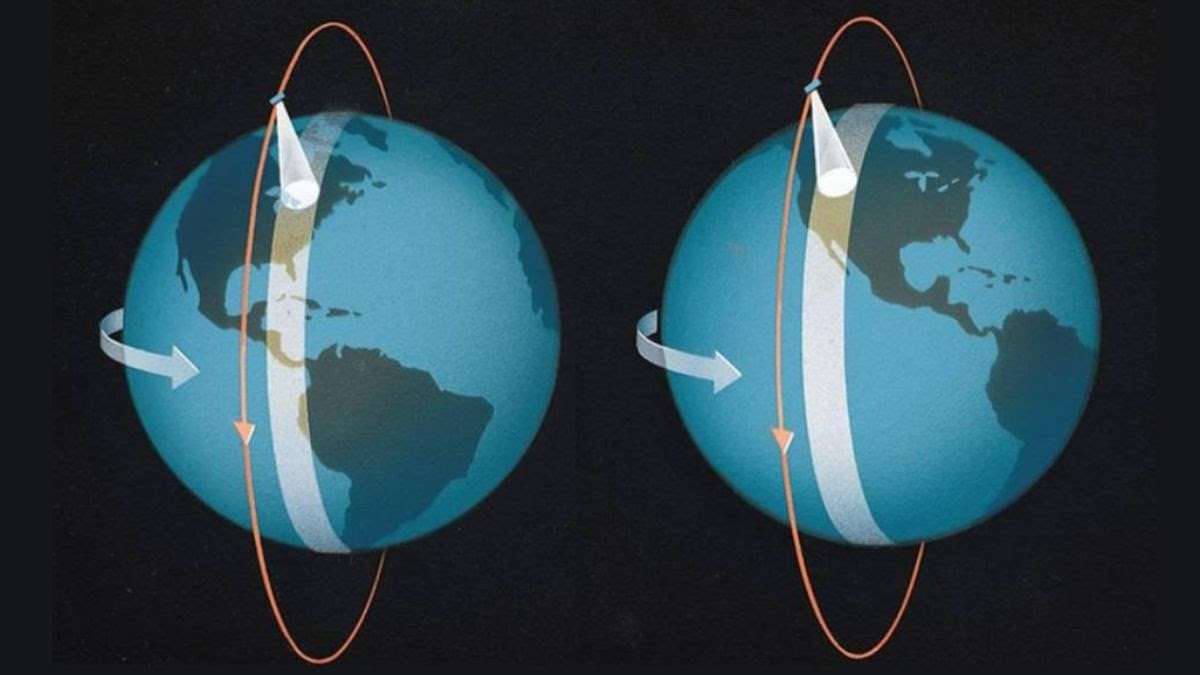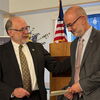
Maine is poised for 'new space' investment, says industry leader
 Screenshot Courtesy / Coalition for Deep Space Imagery, Maine Space Grant Consortium
This graphic depicts the size of a polar-orbit launch vehicle for small satellites, compared with the larger NASA space shuttle and other rockets.
Screenshot Courtesy / Coalition for Deep Space Imagery, Maine Space Grant Consortium
This graphic depicts the size of a polar-orbit launch vehicle for small satellites, compared with the larger NASA space shuttle and other rockets.
With industry activity already underway and an advantageous geographic location for polar orbits, Maine is well positioned for research, education and commercial development in the new space industry, said Terry Shehata, executive director of the nonprofit Maine Space Grant Consortium in Augusta.
Shehata was the speaker at a recent E2Tech presentation on a proposed "Maine Space Complex."
Shehata is leading an effort to establish complex as an economic and workforce development strategy that leverages the state’s assets for launching nanosatellites from small rockets.
The potential cost for initial renovations and construction of the complex is estimated in the range of $50 million to $250 million over five years, said Shehata.

He said it could create as many as 5,500 high-paying jobs, in launch services and manufacturing, by 2042.
Potential funding pools to support spaceport investment, he said, include federal economic recovery grants, NASA , the Maine Jobs and Recovery Plan, Maine Technology Institute, anchor tenancy and bond issuance.
Education and research
The consortium is a member of the national network similar groups, funded by NASA’s National Space Grant College and Fellowship Program. It was established by Congress in 1988 to contribute to the nation’s science and engineering enterprise.
The mission of Maine’s consortium is to improve space research infrastructure, encourage student participation in science, technology, engineering, and mathematics careers, and enhance NASA’s presence throughout Maine. Working with affiliates that include higher education, nonprofit research laboratories, state agencies, technology-based businesses and science and education organizations, the consortium provides student and faculty scholarships, fellowships and internships, seed research grants and travel grants, professional development, outreach to schools and communities, and informal science education activities.
Since 2001, the consortium has invested $25 million in NASA funds, said Shehata.
The consortium’s goals and programs for the use of NASA’s space grant funds for 2020 through 2024 include expanding and diversifying Maine space exploration research capacity, broadening exposure of undergraduate students to aerospace career pathways, broadening exposure to STEM career pathways, he said.
Shehata said a goal of his is to position the new-space industry as an exciting career path that keeps Maine students in their home state.
Paradigm shift
Until recently, he said, space has been the exclusive domain of major government funding and a small handful of contractors.
“This paradigm has recently shifted” due to technology advancements that have allowed small companies to enter the market, he said.
Technology advancements, he continued, include the miniaturization and low cost of manufacturing of the software and hardware for small satellites using small launch vehicles, which have made it easier for small companies to enter the marketplace.

Those advancements have opened the door to entrepreneurs — such as rocket-makers bluShift and VALT, both at Brunswick Landing — to enter the “new space” arena, he said.
“It’s become more cost-effective to enter that arena,” he said, adding, “We wanted to see how we can capitalize on that.”
The global new space industry was worth $371 billion in revenue in 2020 and is projected to be worth $1.5 trillion by 2040, he said.
A major portion of that investment is expected to be in satellites, he said.
A subset of the satellite investment is the “cubesat” — a small satellite of just a few inches cubed.
The cubesat global market in 2018 was $4 billion. That’s projected to increase to $25 billion by 2030.
“The question is, can we capitalize on that?” he said.
Cubesats can be packed with electronics and are cheap to develop, with costs that range from $5,000 to $50,000, he said. They can be manufactured and developed by students, researchers and businesses. The ability of the general public to become involved in their development is an example how far the new space economy has come in recent years, he said.
The potential uses for cubesats touch “on all aspects of the state economy,” he said.
That includes uses such as agricultural and land use monitoring, air and maritime monitoring, and natural resource management.
The consortium is working to develop uses for Maine and give opportunities to students to build around that.
Available sites
“We are more familiar with the large rockets launching primarily from Cape Canaveral” in Florida, Shehata said. “But we’re focusing on the small rockets.”
Shehata cited Loring Commerce Center in Limestone and Brunswick Landing as important assets that would help minimize the cost of establishing a spaceport.
“They have their own goals and objectives that align well with the space economy,” he added.
Other advantages in Maine, he said, include a coastline that’s accessible for launches, a small but growing number of companies that are directly and indirectly involved in the space industry, and Maine’s academic research and development community.
A critical asset, he said, is Maine’s geographic location.
Ports such as Cape Canaveral and Vandenberg Space Force Base on the West Coast primarily launch big rockets and large satellites into primarily geostationary equatorial launches.
By contrast, he said, Maine is situated for polar orbit launches, which sail north to south and provides greater exposure to land mass for data collection.

Satellites on a polar orbit move around the earth from pole to pole. Advantages include the ability to monitor the entire earth as it spins below the satellite on its journey. It contrasts with geostationary orbits, which hover over fixed geographic locations.
While most of Maine’s aerospace workforce is currently in southern Maine, there’s also an opportunity to develop space-economy job opportunities and businesses in Washington and Aroostook counties, he said.
“That’s one of our goals going forward,” he said.
A space complex is “an aspiring vision” that not only enables rocket launches but engagement with students, reaches, businesses, state and local governments and communities across the new space economy value chain and the underlying infrastructure needed to support the value chain, he said.
“There’s an economic impact opportunity throughout the state,” said Shehata.
Mainebiz web partners
Thank you for the very thorough & insightful article! Exciting possibilities here.
Get in touch with us at E2Tech if you'd like a recording of the presentation.










1 Comments